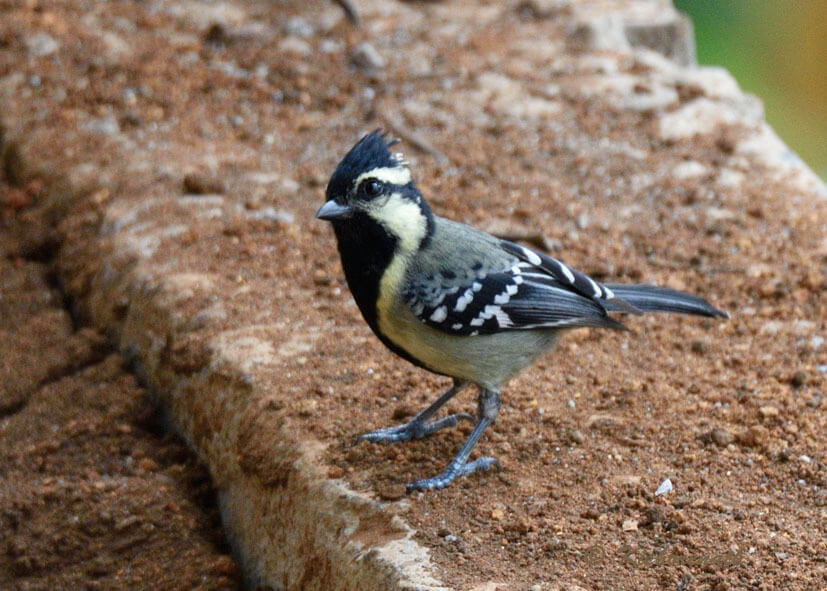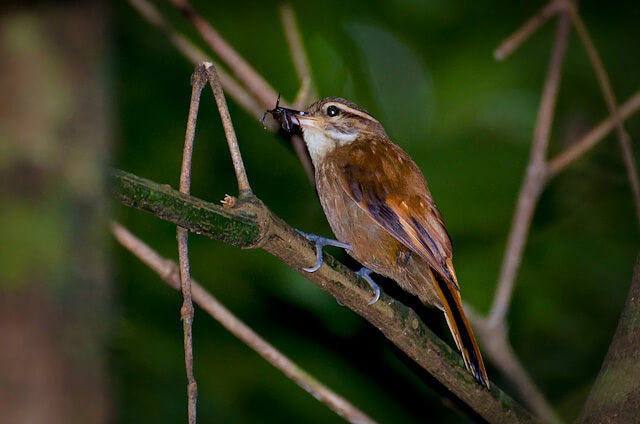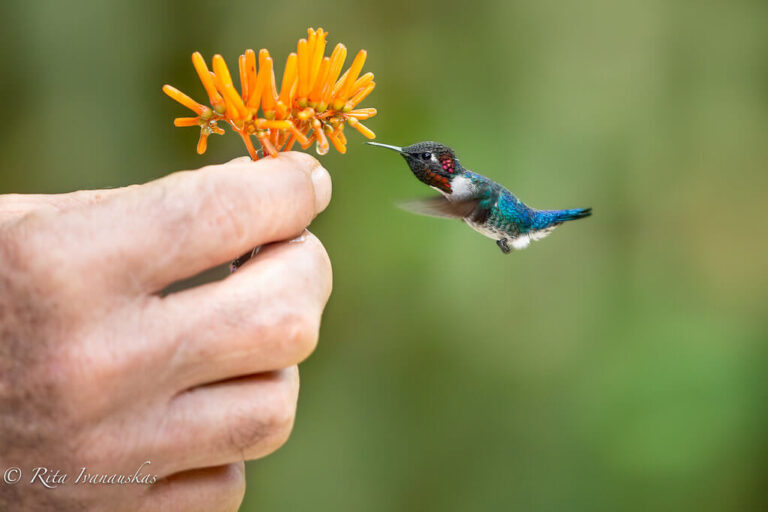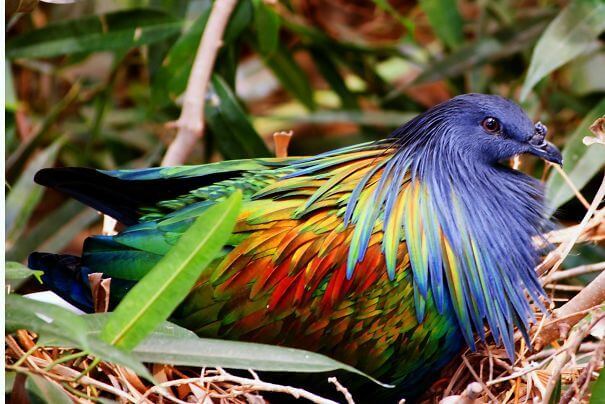Indian Yellow Tit (Machlolophus pronotum): An In-Depth Guide
The Indian Yellow Tit is a vibrant, active songbird that inhabits various parts of the Indian subcontinent. Its striking appearance and distinctive behavior have long fascinated bird enthusiasts and ornithologists alike. This article will provide a comprehensive overview of the Indian Yellow Tit, including its scientific classification, physical characteristics, habitat, behavior, diet, reproduction, predators, conservation status, and relationship with humans.
Contents
Scientific Classification
- Kingdom: Animalia
- Phylum: Chordata
- Class: Aves
- Order: Passeriformes
- Family: Paridae
- Genus: Machlolophus
- Species: Machlolophus apodous
The Indian Yellow Tit, scientifically known as Machlolophus aplonotus, belongs to the Paridae family, which includes small passerine birds known for their adaptability and varied diet.
Physical Characteristics

The Indian Yellow Tit is easily identifiable by its bright and eye-catching plumage. Its most prominent features include:
- Size: Typically around 13-14 cm (5-5.5 inches) in length.
- Coloration: The body is predominantly yellow, especially on the underparts, while the upperparts have greenish-black tones. A black streak runs down the breast.
- Crest: It possesses a characteristic black crest that stands out, adding to its unique look.
- Wings and Tail: The wings and tail are marked with white or yellowish fringes, contrasting with the black feathers.
- Eyes and Beak: It has dark, sharp eyes and a stout black beak, perfect for cracking seeds and foraging for insects.
Habitat and Distribution
The Indian Yellow Tit is primarily found in the foothills of the Himalayas, extending across northern India and into parts of Pakistan and Nepal. It inhabits:
- Forests: Prefers subtropical or tropical moist lowland forests.
- Woodlands: Common in both evergreen and deciduous woodlands, especially in areas with dense foliage.
- Altitude: Typically observed at elevations ranging from 500 to 2,000 meters (1,640 to 6,560 feet).
Preferred Environment
These birds thrive in regions with plenty of trees, including oak, pine, and cedar forests. They are often spotted in orchards and gardens, where they feed and nest.
Behavior
The Indian Yellow Tit is an active and agile bird, often seen hopping around trees or flying from branch to branch in search of food. Key behavioral traits include:
- Foraging: It forages mainly in the upper canopy but occasionally descends to lower branches or the forest floor.
- Vocalization: Known for its musical calls, the Indian Yellow Tit uses a variety of sounds, including whistles and trills, to communicate, especially during the breeding season.
- Social Structure: These birds are generally solitary or found in pairs, although they may join mixed-species foraging flocks during winter months.
Diet
The Indian Yellow Tit has an omnivorous diet, which varies depending on the season. Its primary food sources include:
- Insects and Larvae: A significant portion of its diet comprises caterpillars, beetles, and spiders, particularly important during the breeding season.
- Seeds and Nuts: It consumes various seeds, especially those of coniferous trees, using its strong beak to crack open shells.
- Fruits: During the warmer months, it supplements its diet with berries and small fruits.
This adaptable feeding behavior allows the Indian Yellow Tit to thrive in diverse environments, including human-influenced areas like orchards.
Reproduction
The breeding season for the Indian Yellow Tit typically occurs between March and June. Key aspects of its reproduction include:
- Nesting: These birds build their nests in tree cavities or holes in walls. The nest is often lined with soft materials such as feathers, moss, and grass.
- Eggs: The female lays 3-6 eggs, which are pale with reddish-brown speckles.
- Incubation: The female incubates the eggs for about 13-14 days, while the male helps defend the nest and provide food.
- Fledging: After hatching, the chicks are fed a diet of insects. They fledge approximately 18-20 days after hatching.
Predators and Threats
The Indian Yellow Tit faces several natural threats in its habitat:
- Birds of Prey: Raptors, such as hawks and owls, pose a significant threat to adult birds and fledglings.
- Snakes: Tree-dwelling snakes are known to prey on eggs and nestlings.
- Human Activity: Deforestation and habitat fragmentation are increasing threats, reducing the availability of nesting sites and food resources.
Conservation Status
The Indian Yellow Tit is currently listed as Least Concern by the IUCN Red List, meaning that its population is stable and not under significant threat. However, localized habitat destruction due to deforestation, agriculture, and urbanization could pose future risks. Conservation efforts should focus on preserving its forest habitat and promoting sustainable land use in areas where the species is prevalent.
Evolutionary History and Relationships
The Indian Yellow Tit belongs to the Paridae family, which is widespread across Europe, Asia, and Africa. These birds have adapted to various environments, from temperate forests to tropical regions. The Indian Yellow Tit’s evolutionary lineage suggests that it may have diverged from other closely related species due to geographic isolation in the Himalayan region.
Over time, the species has developed physical and behavioral traits, such as its vibrant plumage and foraging techniques, to thrive in its specific environment. Its closest relatives include other tit species, such as the Cinereous Tit (Machlolophus spilonotus) and the Yellow-cheeked Tit (Machlolophus xanthogenys).
Relationship with Humans
The Indian Yellow Tit is generally well-regarded by people living in its range. It is often seen as a helpful bird in rural areas because it controls insect populations. Its bright colors and lively behavior make it a favorite among birdwatchers. However, human activity, such as deforestation and urban expansion, can indirectly impact the species by reducing its habitat.
Interesting Facts
- The Indian Yellow Tit is known for its adaptability, often nesting in artificial structures such as old buildings or garden sheds.
- These birds are monogamous during the breeding season and may remain in pairs for several years.
- Their vocalizations vary widely, with calls used for mating, territorial defense, and warning others of nearby predators.
Conclusion
The Indian Yellow Tit is a remarkable bird, both in appearance and behavior. While it currently enjoys a stable population in its native range, ongoing conservation efforts will be vital in ensuring its continued survival in the face of habitat loss and environmental change. With its striking plumage, energetic foraging habits, and musical calls, the Indian Yellow Tit remains a vibrant part of the avian world in the Indian subcontinent. Bird enthusiasts and conservationists alike should take note of this fascinating species and its role in maintaining the health of its ecosystems.
- Golden Retriever Pros and Cons: What Every Pet Parent Should Know - 15 September 2025
- Cane Corso Dog Breed: Health, Care, and Lifespan - 14 September 2025
- Catahoula Leopard Dogs: Description, Temperament, Lifespan, & Facts - 21 July 2025







